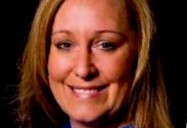PERSON OF THE WEEK: The mortgage industry is on a never-ending quest to achieve the perfect borrower experience. Today, that means lenders must be willing to invest in technology that delivers the best possible online, all-digital, “contactless” experience, as well as personalized and efficient live support via the channel of the borrower’s choice (phone, email, text, etc.)
But in their search to find the perfect mix of technology and skill to wow customers, lenders must also stay cognizant of present and future compliance needs. With new and changing regulations on the horizon, lenders must carefully scrutinize their present and future technology assets and vendors to ensure compliance-related processes are up to date. To learn more, MortgageOrb recently interviewed Greer Allgood, managing director, mortgage operations, at Wipro Opus Risk Solutions.
Q: How do you see the mortgage industry evolving post-pandemic?
Allgood: Digitalization has been on the rise within mortgage originations for many years, and includes such features as e-sign, e-disclosures, and e-closings. The pandemic pushed non-adopters to the back of the line or out of the market altogether given the required need to move to a paperless environment.
As we move toward a new normal, the realization of variable cost models, mitigation of operational risks, and material process efficiencies found from these “e-methods” have made this a quintessential practice for the mortgage industry going forward. This will continue to evolve, and technology advances will be an imperative component to the success of lenders and mortgage divisions alike.
Q: What are the most important issues around risk and compliance that you are seeing now?
Allgood: The industry is still discovering impacts from some of the more significant regulations that rolled out post financial crisis. Couple this with a great deal of interpretation that comes with some of these somewhat vague mortgage regulations, and the result is an acute need for mortgage companies and due diligence firms to be very explicit on what their stance is and how they execute those interpretations in good faith.
If there is inconsistency in operational practices related to TILA RESPA Integrated Disclosure (TRID), qualified mortgage (QM), ability to repay (ATR), and other compliance – specific requirements – where interpretations have not been clearly defined and documented this is considered an urgent risk. The absence of these documented adoptions is found to be red flags to regulators and audit partners, which can create exposure to disparate impact.
Documenting one’s interpretations within one’s policies, procedures, and processes as well as one’s risk and control framework, and demonstrating those within one’s workflows, are a must-have in today’s heavily regulated mortgage industry.
Q: What is the next compliance hurdle lenders/servicers should have on their radar?
Allgood: Qualified Mortgage (QM) 2.0 has been recently introduced, and the changes to the original QM structure are material. This means, whether originated or audited, enhancements must be made to loan origination systems/automated underwriting module/system (AUS), similar to how the new Uniform Residential Loan Application (URLA – 1003) required earlier this year.
Underwriters will need to be trained on these new rules for Safe Harbor and the assurance of legal protections as the loan moves into servicing, and reliance on FNMA/FHLMC Desktop Underwriter (DU) or Loan Prospector (LP) approvals is no longer a guarantee of compliance with QM 2.0. Those lenders or mortgage divisions that are focused on Safe Harbor should surround the adoption of the new 2.0 rules with formal project plans across people, processes, and technology.
Q: What do you see as the next big thing for the industry? Innovation or regulation?
Allgood: Regulations will continue to evolve in the mortgage industry, but the ability to be agile and adopt these requirements while ensuring borrowers have an excellent experience during the process will be impossible without innovation. Innovation and technology will be the differentiating factor for lenders and mortgage divisions, specifically for the next generation of home buyers who are beginning to use these services and who primarily do everything online and expect immediate results.
Digitalization, blockchain technology and even artificial intelligence (AI) will become key influences in moving to a real-time service podium while maintaining a strong compliance control platform. Those players who focus on being pioneers on the mortgage technology front while automating the controls for compliance, credit and operational risk will be successful in maneuvering the marketplace and capturing that coveted market share.
Q: What can we expect to see from due diligence firms in the next two years?
Allgood: The role due diligence firms play in the mortgage market requires more agility in the immediate adoption of rules and regulations than even their mortgage lender clients. And given how the credit and compliance risks continue to evolve, technology innovation continues to be a critical component in due diligence. The processes and systems must be robust enough to ensure completeness and at the highest quality, while meeting client timelines and obligations. This is not always easy to fully capture or balance.
Those firms that have strong partnerships with large-scale, well-established technology firms will be the long-term visionaries and thought leaders that serve clients at an unmatched level of excellence and move these pivotal services into the next century.











